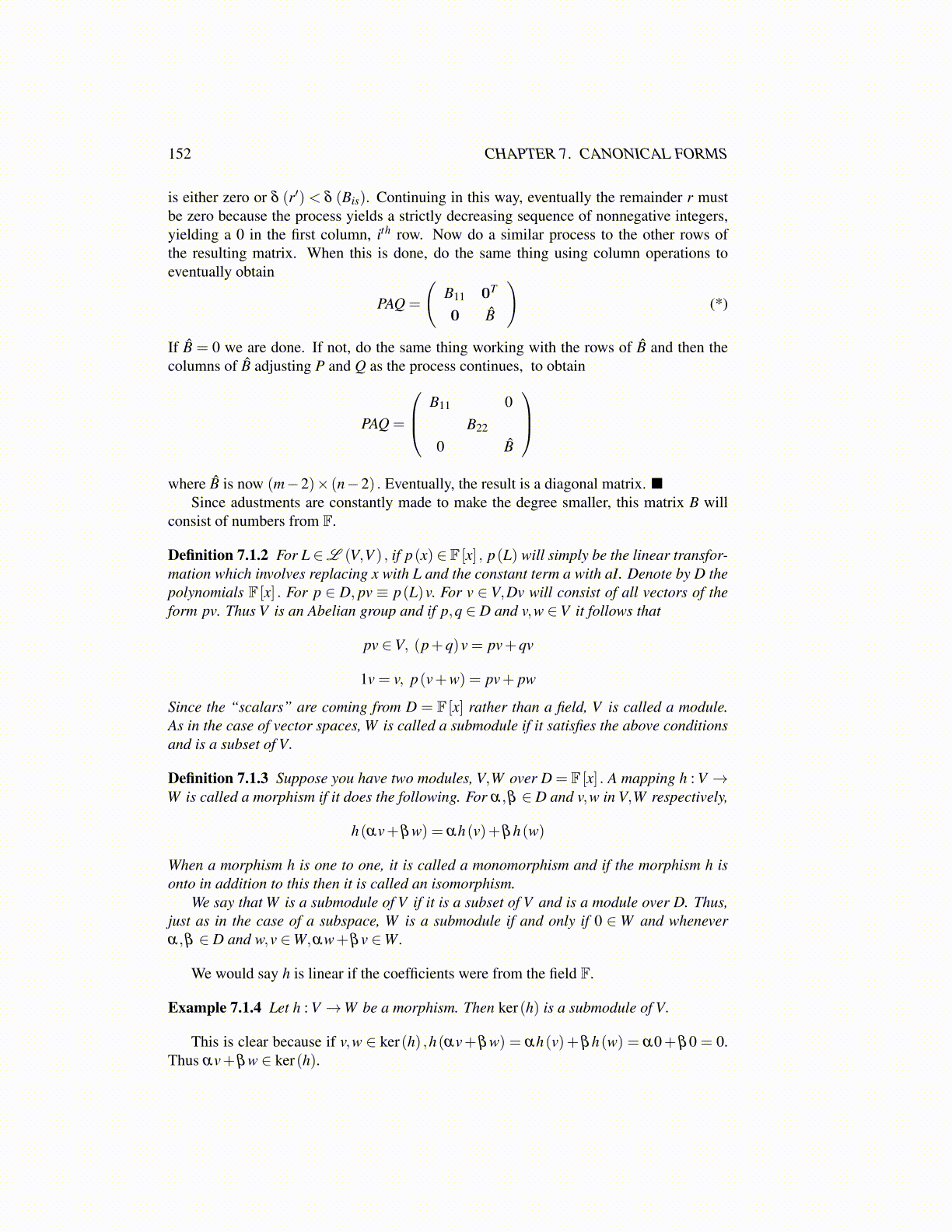
152 CHAPTER 7. CANONICAL FORMS
is either zero or δ (r′) < δ (Bis). Continuing in this way, eventually the remainder r mustbe zero because the process yields a strictly decreasing sequence of nonnegative integers,yielding a 0 in the first column, ith row. Now do a similar process to the other rows ofthe resulting matrix. When this is done, do the same thing using column operations toeventually obtain
PAQ =
(B11 0T
0 B̂
)(*)
If B̂ = 0 we are done. If not, do the same thing working with the rows of B̂ and then thecolumns of B̂ adjusting P and Q as the process continues, to obtain
PAQ =
B11 0B22
0 B̂
where B̂ is now (m−2)× (n−2) . Eventually, the result is a diagonal matrix. ■
Since adustments are constantly made to make the degree smaller, this matrix B willconsist of numbers from F.
Definition 7.1.2 For L ∈L (V,V ) , if p(x) ∈ F [x] , p(L) will simply be the linear transfor-mation which involves replacing x with L and the constant term a with aI. Denote by D thepolynomials F [x] . For p ∈ D, pv ≡ p(L)v. For v ∈ V,Dv will consist of all vectors of theform pv. Thus V is an Abelian group and if p,q ∈ D and v,w ∈V it follows that
pv ∈V, (p+q)v = pv+qv
1v = v, p(v+w) = pv+ pw
Since the “scalars” are coming from D = F [x] rather than a field, V is called a module.As in the case of vector spaces, W is called a submodule if it satisfies the above conditionsand is a subset of V.
Definition 7.1.3 Suppose you have two modules, V,W over D = F [x] . A mapping h : V →W is called a morphism if it does the following. For α,β ∈D and v,w in V,W respectively,
h(αv+βw) = αh(v)+βh(w)
When a morphism h is one to one, it is called a monomorphism and if the morphism h isonto in addition to this then it is called an isomorphism.
We say that W is a submodule of V if it is a subset of V and is a module over D. Thus,just as in the case of a subspace, W is a submodule if and only if 0 ∈W and wheneverα,β ∈ D and w,v ∈W,αw+βv ∈W.
We would say h is linear if the coefficients were from the field F.
Example 7.1.4 Let h : V →W be a morphism. Then ker(h) is a submodule of V.
This is clear because if v,w ∈ ker(h) ,h(αv+βw) = αh(v)+βh(w) = α0+β0 = 0.Thus αv+βw ∈ ker(h).